Trying to ‘Fix’ Hair Loss Overnight? Here’s Why That Backfires
When it comes to hair growth, slow and steady wins. Here’s why quick fixes often do more harm than good.

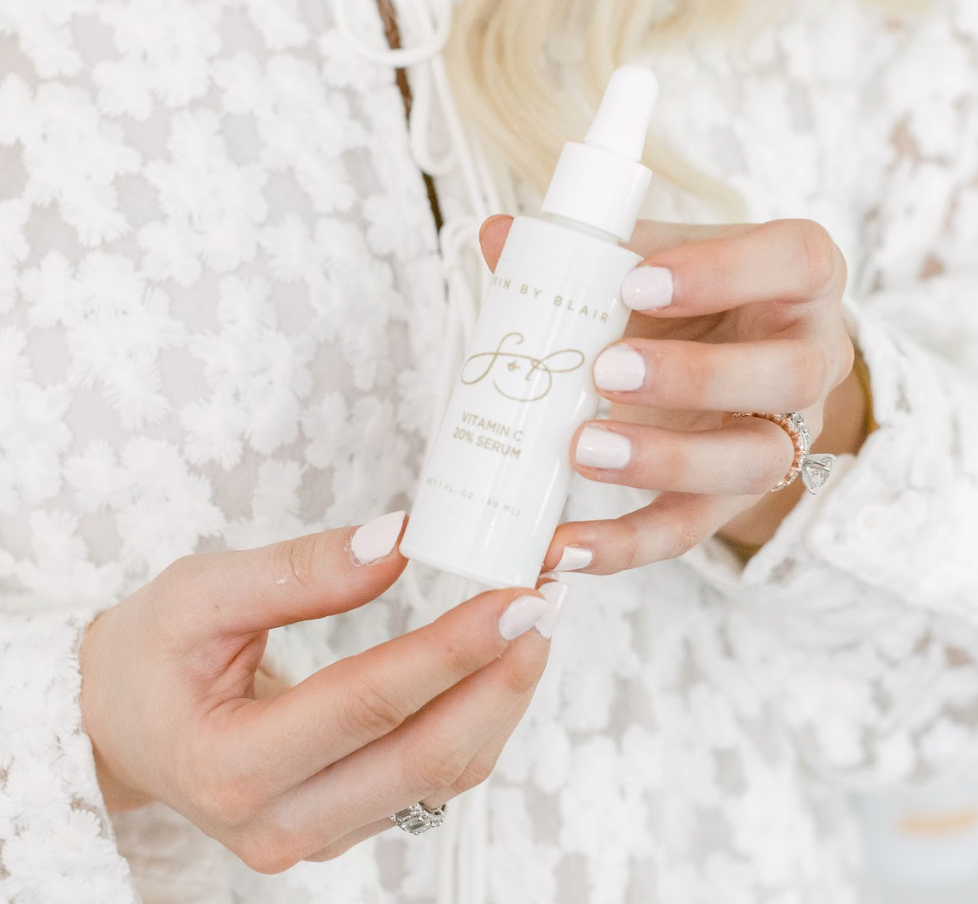
What is Vitamin C?
Vitamin C is a potent antioxidant that helps protect our skin from damaging free radicals (such as pollution and UV rays) that contribute to collagen breakdown and pre-mature aging. It comes in many forms, with L-Ascorbic Acid and THD Ascorbate being the two most common.
Who needs it?
Everyone! All skin types can benefit from incorporating an antioxidant into their routine to protect from free radicals.
What does it do for my skin?
Vitamin C builds collagen, protects from pollution + UV rays, brightens and evens skin tone, lessens the appearance of fine lines + wrinkles, and targets pigmentation.

The most common form of vitamin C that has historically been considered the “gold standard” due to it's active form (& the one you've probably heard of most) is L-ascorbic Acid. You can find it in concentrations of 3-20%, with higher concentrations being more irritating. The problem with L-ascorbic acid, and products containing it, is that it has a low pH (less than 3). Our skin is happiest and functions best within a pH range of 4.7–5.7 — and when outside of this range, your skin barrier can become compromised, which translates to skin irritation. For those with sensitive skin, this can happen more easily. So if you apply a product with a pH of 2.5–3 to your skin that needs to have a pH of 4.7–5.7, it is much more likely that the product will disrupt your skin barrier and ultimately cause skin irritation.
Another common concern with L-ascorbic acid is it's stability (or lack thereof). Unfortunately, the molecule is highly unstable, meaning the anti-oxidant that you purchased can easily become oxidized when exposed to air (aka: opening the bottle) - not ideal! Ever wonder why vitamin C serums are so.dang.expensive? Because bottling this molecule in a stable form is extremely costly (but also vital to it's effectiveness)! This is why it's so important to buy your Vitamin C from a reputable source, such as a medical skincare line (such as SBB or Revision) or from your local dermatology office.

The second most common form of Vitamin C is Tetrahexyldecyl Ascorbate (also known as THD Ascorbate). To put it simply, THD Ascorbate is L-ascorbic Acid surrounded by lipid molecules that serve three purposes: 1. They make the molecule much more stable (meaning longer protection on your skin and on your shelf), 2. They neutralize the pH (meaning less skin irritation), and 3. They enhance skin penetration (meaning more skin benefits and protection). Once absorbed by the skin, the lipids break away, converting the molecule into L-ascorbic acid.
For my fellow science nerds, check out this quick diagram on the left comparing these two molecules!
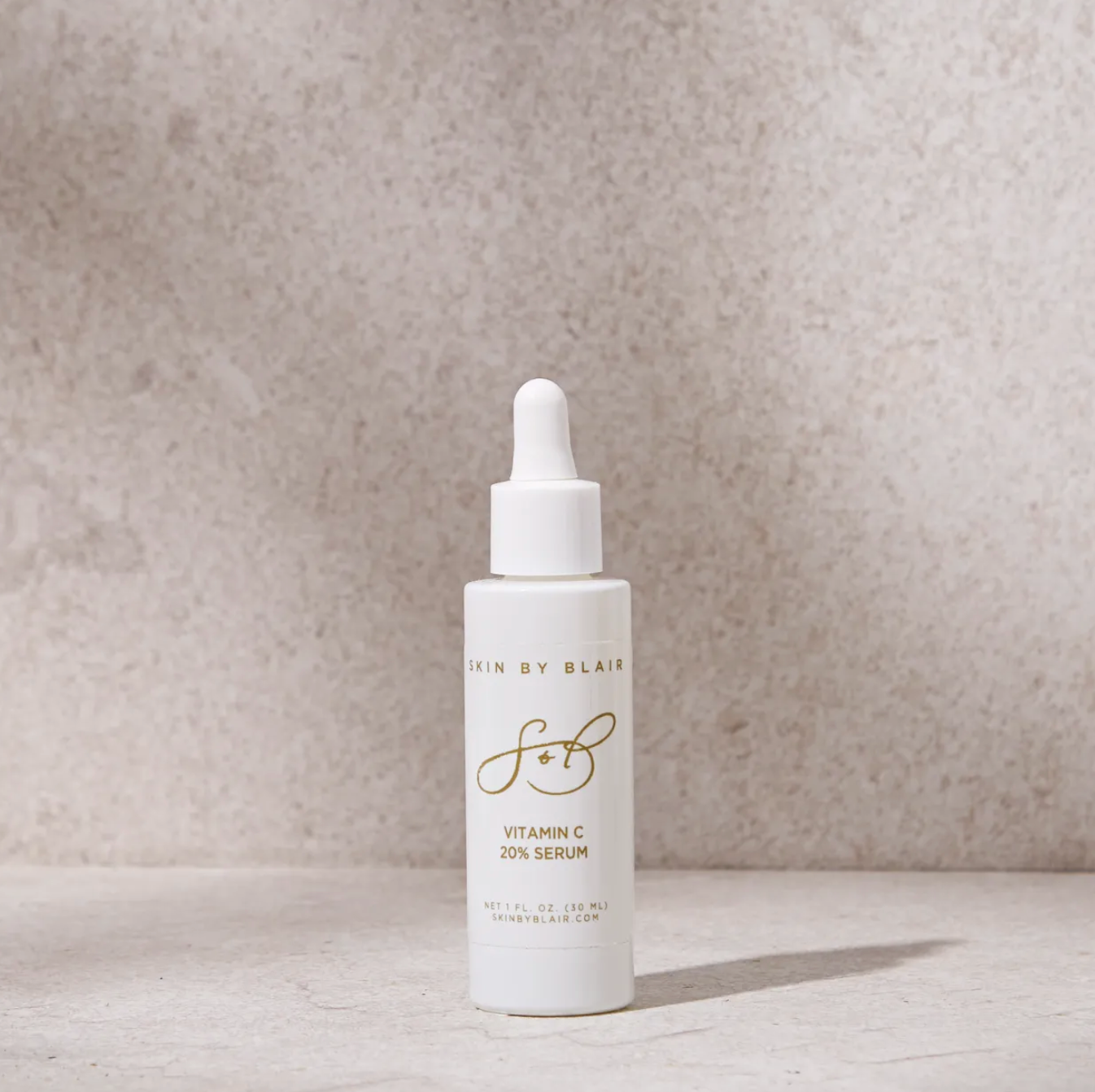
What it is: A triple-action antioxidant that includes both THD Ascorbate and L-Ascorbic acid, featuring a time-released delivery system to deliver a highly-concentrated dose of Vitamin C that transforms dull, aging skin into a bright, glowing complexion. This age-defying staple provides antioxidant protection, supports healthy collagen production, and visibly reduces hyperpigmentation, delivering the kind of long-term benefits you want to make a mainstay in your routine.
Why we love it: It visibly brightens dull skin and improves skin’s firmness while defending against free radical damage. It provides a healthy glow with a dewy finish - perfect for summertime!
Who I recommend it for: You’ll love this option if you have normal, dry, or combination skin and are prefer a vitamin C serum over a cream. It’s also great for those who prefer a dewy glow to your skin in the AM!
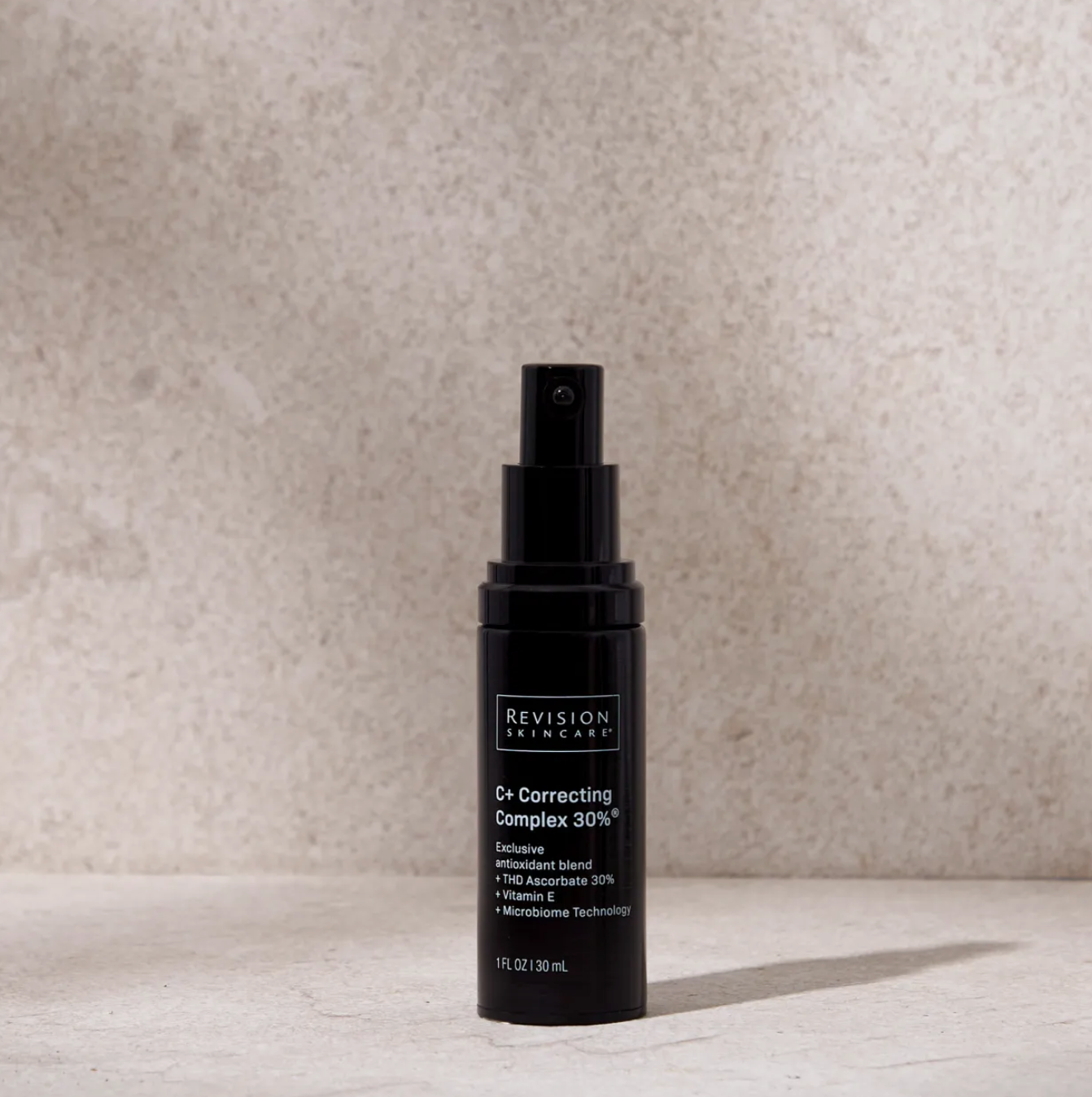
What it is: A 30% THD Ascorbate formula that is infused with Revision’s patent-pending MelaPATH® technology that illuminates, refines, and rejuvenates, defends and corrects the skin-damaging effects of free radicals generated by Urban Dust and High Energy Visible light (HEV or blue light).
Why we love it: In addition to correcting existing damage and defending your skin for the future, this formula helps support the skin’s natural production of Vitamin C and E and supports the skin’s microbiome with prebiotic technology.
Who I recommend it for: This is a great option for those who are oily and acne-prone in addition to normal/combo. The 30% THD Ascorbate is great at targeting pigmentation and reducing redness, so if either of those are a main concern - this is for you!
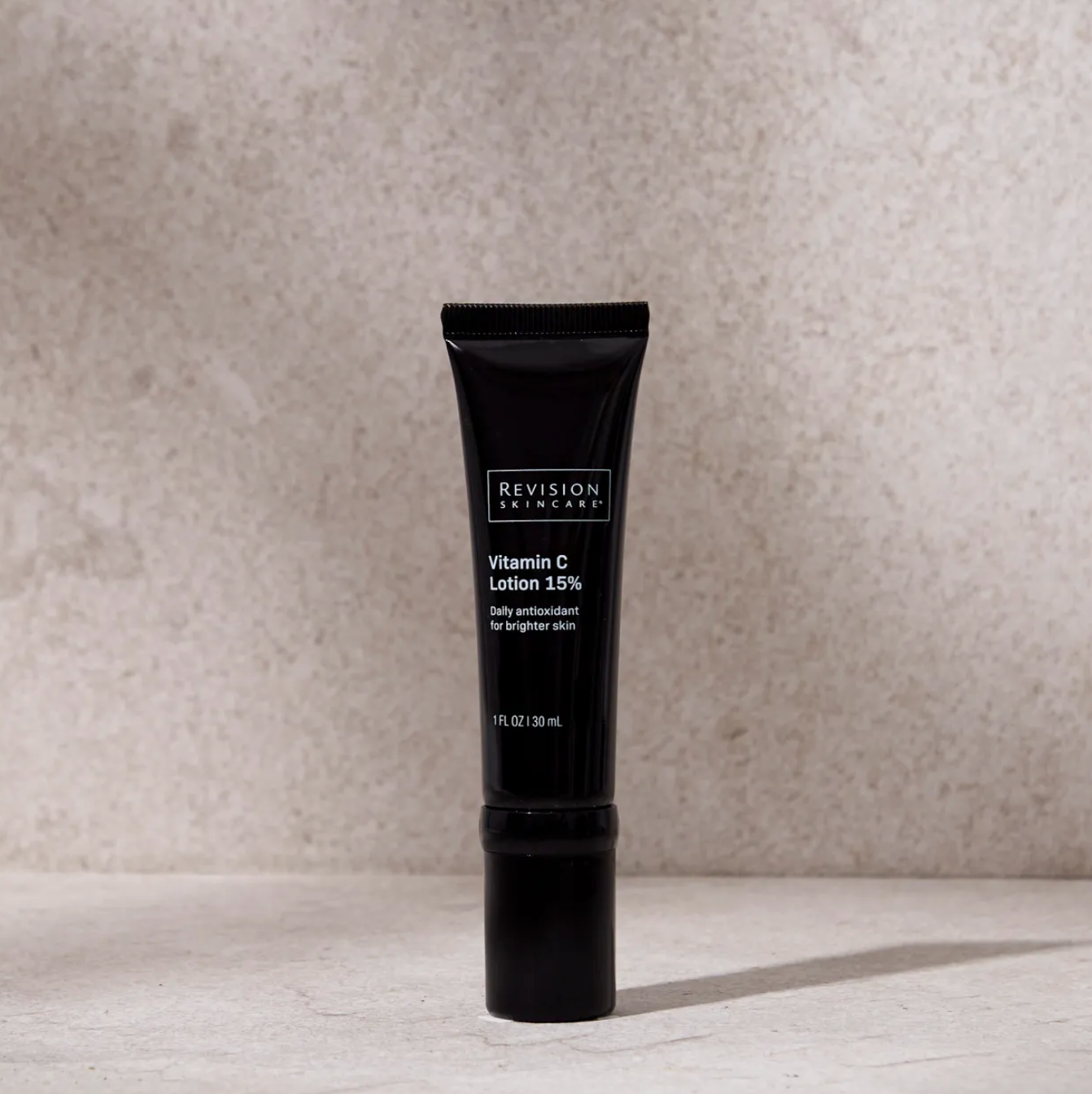
What it is: Similar to C+, this uses THD Ascorbate but at 15% potency. It also includes Vitamin E and Coenzyme Q10 to brighten dull skin and reduce the appearance of fine lines, wrinkles and loss of firmness, and squalane for healthy, smooth skin.
Why we love it: It's a great option for targeting redness in sensitive skin. Many people are not able to tolerate the 20% potency of our L-Ascorbic acid formula nor the 30% THD Ascorbate formula of C+. This is a great in between for sensitive and reactive skin types!
Who I recommend it for: Sensitive and reactive skin types, or those looking for a more budget-friendly option of a THD Ascorbate formula!
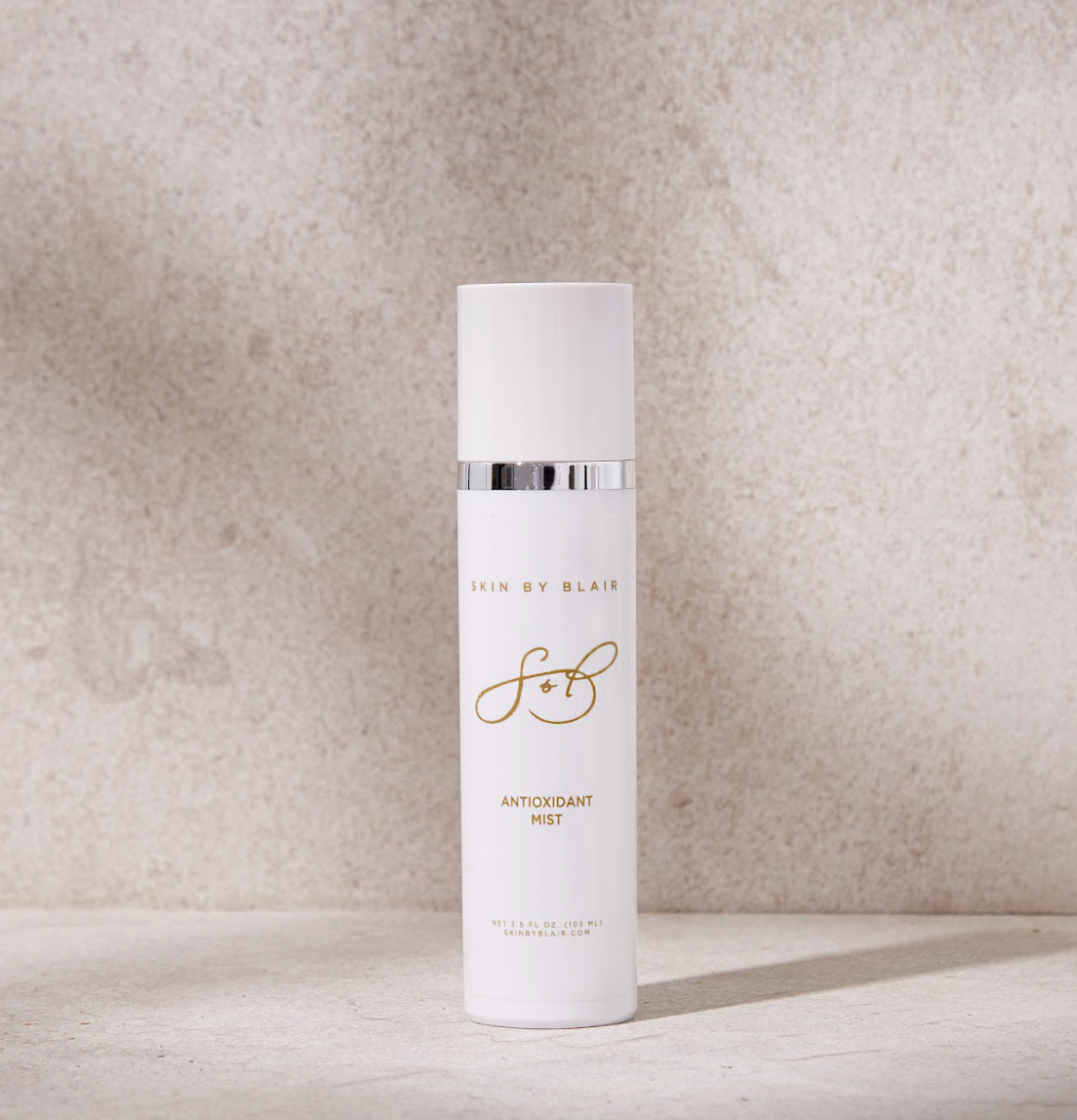
What it is: A refreshing mist fortified with a rich blend of ascorbic acid, and other antioxidants like chamomile, lavender extract, green tea extract, and witch hazel to brighten dull, tired skin and refine your complexion. This mist provides gentle hydration and protection from free radical damage.
Why we love it: It's great for on-the-go reapplication, or if you're looking for a nice dewy finish with extra free radcial protection!
Who I recommend it for: I love this for teens/tweens who want to get started on a good skincare routine - this is great for antioxidant protection while giving them the glow that they desire!
When it comes to hair growth, slow and steady wins. Here’s why quick fixes often do more harm than good.
The temps may drop, but your glow doesn’t have to. Discover the ingredients that keep skin soft, strong, and hydrated.
Because glowing skin shouldn’t require hours you don’t have. Here’s how to keep your routine simple, effective, and stress-free.
It’s not about removing hair — it’s about revealing glow. Discover the truth about dermaplaning, why your hair won’t grow back thicker, and how to safely try it at home...